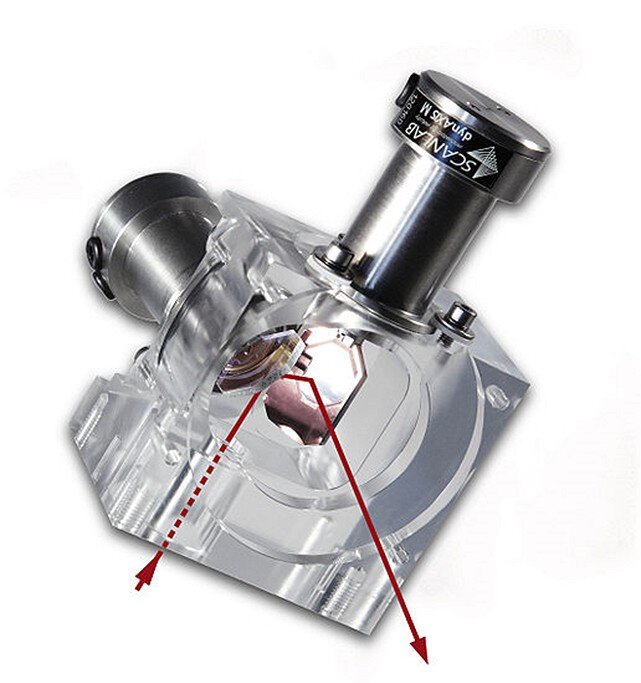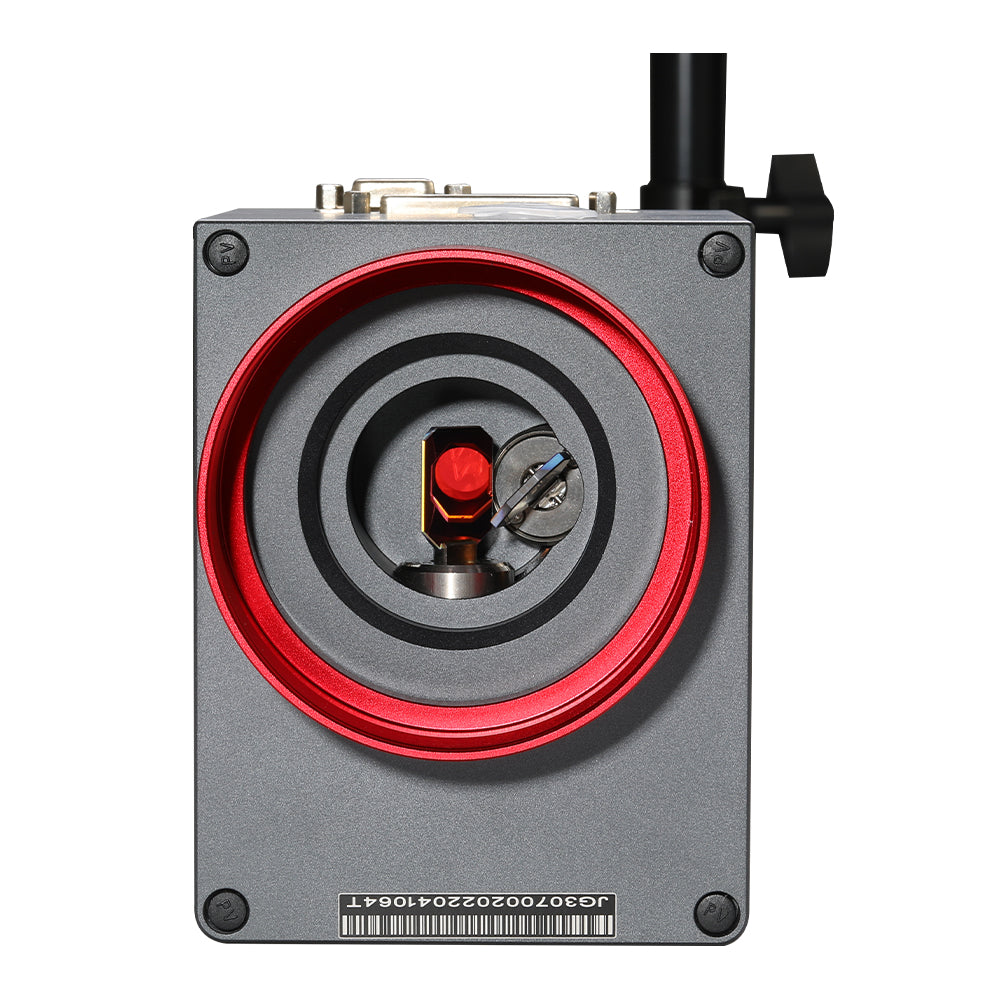Key Applications of a Galvanometer Scanner in Numerous Scientific Study Area
Galvanometer scanners have become integral to different scientific research study areas, providing enhanced precision in applications ranging from biomedical imaging to ecological monitoring. Their ability to promote high-resolution imaging strategies, such as confocal microscopy, plays a vital role beforehand our understanding of cellular frameworks. In material processing, these devices enhance the precision of laser cutting and welding. As we explore the multifaceted applications of galvanometer scanners, it becomes obvious that their effect expands far beyond plain technical abilities, increasing concerns about their future capacity in emerging research study areas.
Biomedical Imaging

In confocal microscopy, galvanometer scanners assist in the acquisition of images with enhanced resolution and comparison, permitting scientists to envision cellular parts in vivo. The ability to rapidly record multiple focal airplanes improves the three-dimensional restoration of tissues, giving important insights right into their design and function.

Additionally, the fast scanning abilities of galvanometer systems add to innovations in vibrant imaging applications, such as keeping track of cellular responses to stimuli. Galvanometer scanners are important tools in the area of biomedical imaging, progressing research study and scientific diagnostics via their precision and efficiency.
Material Processing
Accuracy in product processing is essential for attaining top quality outcomes in numerous industrial applications (galvanometer scanner). Galvanometer scanners play an essential duty in improving this precision by enabling precise and fast movement control during the processing of materials such as porcelains, metals, and polymers. These gadgets assist in methods like laser inscription, welding, and cutting, which call for finely-tuned adjustments to ensure optimal results
In laser cutting, for example, galvanometer scanners enable for elaborate styles to be carried out with high integrity, minimizing waste and enhancing manufacturing efficiency. The rapid activity capabilities enable fast modifications in the laser beam of light path, which is crucial for maintaining regular cutting top quality throughout differing material thicknesses. In a similar way, in laser welding applications, the accuracy provided by galvanometer scanners ensures solid joints with minimal thermal distortion, therefore boosting architectural stability.
Furthermore, the flexibility of galvanometer scanners to different laser types and wavelengths additionally expands their energy in product processing. Their capability to work in tandem with advanced software program for real-time tracking and control includes an added layer of sophistication, making it possible for suppliers to achieve specific specs tailored to certain applications. Therefore, galvanometer scanners are crucial ahead of time the capabilities of product processing technologies.
Optical Characterization
In the realm of optical characterization, the function of galvanometer scanners ends up being progressively substantial as they facilitate the evaluation of numerous optical properties with high accuracy. These devices make it possible for exact control of laser beam of lights, allowing researchers to methodically probe products at numerous angles and regularities. This ability is important for characterizing the check over here refractive index, absorption coefficient, and scattering residential properties of varied materials.
Galvanometer scanners are especially reliable in techniques such as optical coherence tomography (OCT) and laser-induced fluorescence (LIF), where rapid scanning is critical. By achieving high-speed inflection of the laser position, galvanometer scanners boost the temporal resolution of these techniques, causing enhanced imaging and evaluation. In addition, they allow the expedition of complex interactions between light and issue, which is essential for recognizing material behaviors under various conditions.
Moreover, the integration of galvanometer scanners with spectroscopic methods broadens their utility, permitting detailed spectral evaluation across a wide range of wavelengths. This flexibility makes them vital devices in areas such as products science, biomedical research, and nanotechnology, where in-depth optical characterization is critical for progressing knowledge and innovation.

Laser Micromachining
The advent of laser micromachining has actually reinvented making processes, enabling the creation of detailed frameworks with unmatched precision. This technique makes use of high-intensity laser light beams to precisely remove product from a substratum, making it feasible to fabricate micro-scale elements that are crucial in different sectors. The application of galvanometer scanners in laser micromachining boosts the performance and precision of this process by allowing accurate and quick beam positioning.
Galvanometer scanners promote the dynamic control of laser beams, making it possible for intricate patterns to be etched or reduced with high fidelity. Their rapid response times and high-resolution capacities enable the control of laser pulses, which is important for achieving the wanted product residential properties and surface coatings. This technology is particularly useful in fields such as electronics, where the miniaturization of elements is necessary for efficiency enhancement.
Additionally, laser micromachining is significantly being used in the medical area for making accuracy instruments and implants. The mix of laser technology and galvanometer scanning not only improves production workflows however likewise minimizes waste and improves overall material utilization, making it a lasting choice for modern-day production obstacles.
Environmental Surveillance
Environmental tracking has actually come to be increasingly essential in managing link the health and wellness and assessing of environments and urban atmospheres. The assimilation of galvanometer scanners in this field makes it possible for accurate, fast, and reliable information collection, facilitating better decision-making procedures. These scanners are skilled at directing laser light beams or sensing units across various surfaces, enabling high-resolution mapping of ecological criteria such as air quality, dirt make-up, and water contamination.
In air quality surveillance, galvanometer scanners can be employed to analyze particle matter and aeriform contaminants, supplying real-time information that informs public health and wellness efforts. For water top quality analyses, these scanners can help in finding contaminants and gauging physical specifications, thereby making sure conformity with environmental policies. In addition, in remote noticing applications, galvanometer scanners improve the capability of read the article satellite and drone systems to catch comprehensive images and information of large locations, determining anthropogenic impacts and environmental modifications.
The flexibility and accuracy of galvanometer scanners make them important devices in ecological tracking, contributing dramatically to sustainable development efforts and the protection of natural deposits. As the requirement for efficient ecological administration grows, the function of these sophisticated devices will certainly expand better.
Verdict
In recap, galvanometer scanners act as important devices across numerous clinical research study domain names. Their application in biomedical imaging enhances the accuracy of techniques vital for cellular visualization and diagnostics. In material processing, these scanners assist in advanced laser cutting and welding procedures, making sure marginal distortion. Furthermore, their function in ecological monitoring underscores the significance of precise information collection in attending to public health and ecological challenges. The convenience and performance of galvanometer scanners remain to drive advancements in these essential fields.
In laser welding applications, the precision provided by galvanometer scanners ensures strong joints with marginal thermal distortion, thus boosting architectural stability.
In addition, the flexibility of galvanometer scanners to different laser kinds and wavelengths better widens their energy in material processing. By accomplishing high-speed modulation of the laser setting, galvanometer scanners boost the temporal resolution of these approaches, leading to improved imaging and analysis. The application of galvanometer scanners in laser micromachining boosts the performance and precision of this procedure by allowing accurate and fast light beam positioning.
Galvanometer scanners assist in the vibrant control of laser light beams, making it possible for complicated patterns to be engraved or cut with high integrity.